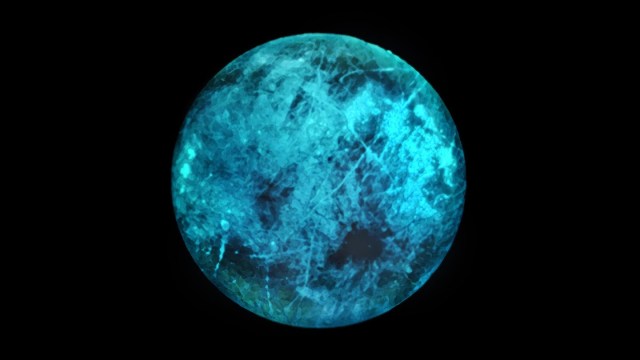No, Stephen Hawking’s Black Hole Information Paradox Hasn’t Been Solved
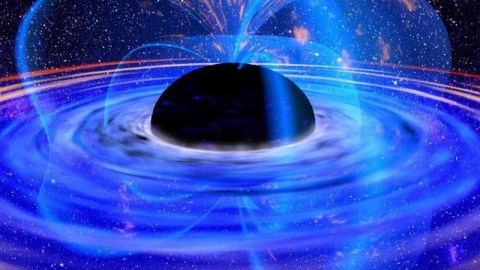
We still don’t know how the information encoded onto it gets out.
No matter what you do in the Universe, its overall entropy always increases. Even when we put things in order — assembling a puzzle, cleaning our houses, even unboiling egg whites — only the local entropy of that isolated component of our system decreases. The energy that we have to expend to accomplish these feats increases the total entropy by a greater amount than the “ordering” process decreases it by, and as a result, entropy always goes up. From another, equivalent perspective, the total amount of information in a physical system can only stay the same or increase; it can never go down.
But for black holes, that doesn’t appear to be the case. If you throw a book into a black hole, that book contains all sorts of information: the order of the pages, the text contained on them, the quantum properties of the particles making up the pages and the cover, etc. That information goes into the black hole, adding to its mass/energy. Much later, when the black hole decays via Hawking radiation, that energy comes back out, but the information is predicted to be totally random: the book’s information has been erased. Despite a recent claim that the paradox has come to an end, it still remains very much unsolved. Here’s the science of what’s really going on.

Every particle that exists in the Universe has a certain amount of information inherent to it. Some of those properties are static: things like mass, charge, magnetic moment, etc. But other properties are dependent on the system that it’s a part of, as well as the history of its interactions: things like its quantum entanglement properties, its spin and orbital angular momentum, and whether it’s bound to other quantum particles. If we could know the exact microstate of a system — the quantum state of every particle included within it — we’d know everything that was knowable about it.
Of course, in reality, that’s not physically possible. We have properties that we do know and can measure, like the temperature of a gas, and then things we don’t know, like the positions and momenta of every atom of that gas. Instead of thinking of entropy as a measure of disorder, which is misleading and incomplete, it’s more accurate to think of entropy as the amount of “missing information” needed to determine your system’s specific microstate. That definition of entropy is key to making sense of the idea of quantum information.
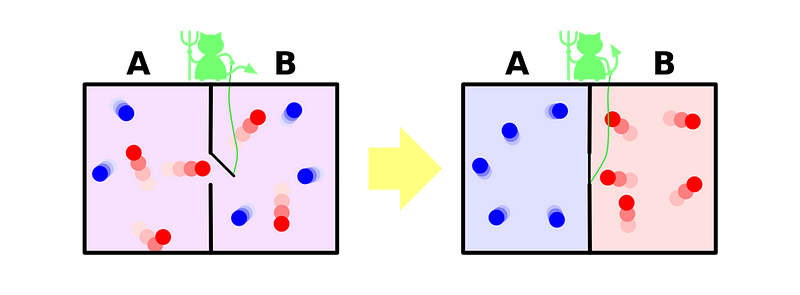
In our Universe, to the best of our understanding, entropy can never decrease. The second law of thermodynamics demands it:
- take any physical system you like,
- don’t allow anything to enter or leave it (i.e., make sure it’s closed),
- and its entropy can only increase or, at best, stay the same.
A consequence of this is that eggs can’t unscramble themselves, lukewarm water never separates into hot and cold parts, and ashes don’t reassemble into their pre-combustion state.
That’s why the black hole information paradox is such a puzzle. If you take something that’s full of information and throw it into a black hole, the black hole gains all of the mass, energy, charge, and angular momentum that entered it. But what happens to the information? In principle, it could get stretched out and encoded on the black hole’s surface: we can define a black hole’s entropy in such a way that its surface area provides a place for every quantum of information to reside.
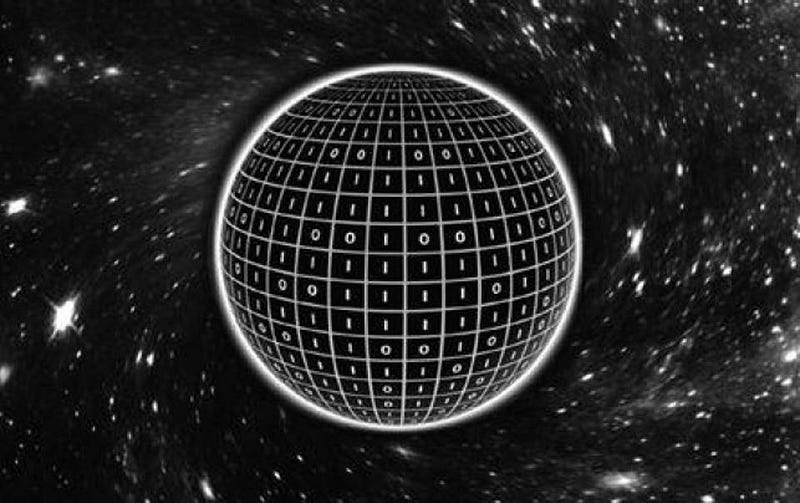
But even with that addition, there’s no known way to maintain that information. Eventually, over time, that black hole will spontaneously decay: a consequence of the curvature of spacetime outside the black hole’s event horizon. That curvature is determined by the black hole’s mass, with lower-mass black holes curving space more severely at the event horizon than their larger-mass counterparts. As Stephen Hawking famously demonstrated in 1974, black holes aren’t completely black, as they do emit radiation after all. That radiation:
- has a blackbody spectrum: the same properties it would have if you heated a completely black, perfect absorber to a certain finite temperature,
- where that temperature is defined by the mass of the black hole,
- that radiation contains energy, which causes the black hole to lose mass via Einstein’s E = mc²,
- in a process that continues until the black hole evaporates entirely.
But you might notice something is missing: this radiation doesn’t return the information you put into it. Somewhere along the way, information was destroyed. That’s the key puzzle of the black hole information paradox.
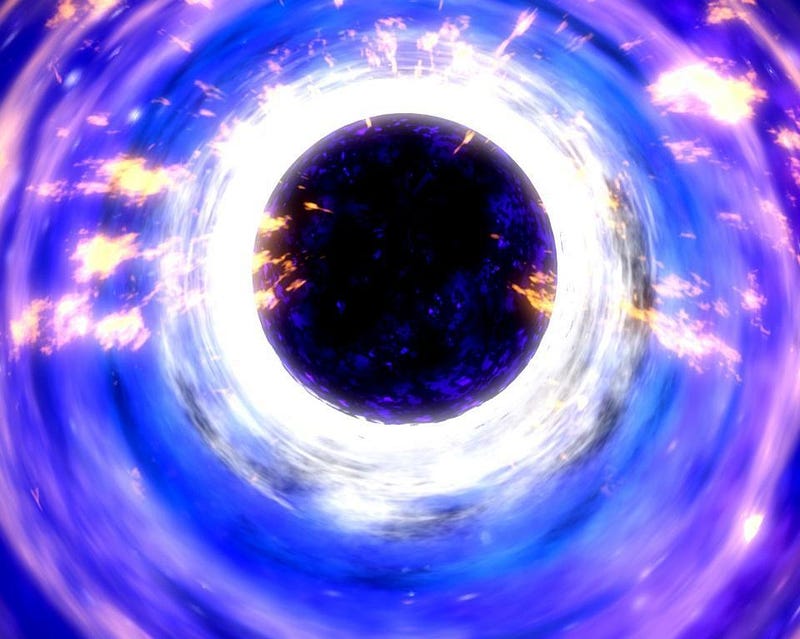
No one disputes the initial setup of the puzzle: that information exists, and that the information (and entropy) does in fact go into the black hole to start. The big question is whether that information comes back out again or not.
The way we calculate what comes out of a black hole via Hawking radiation, despite the fact that Hawking radiation has been around for almost half-a-century, hasn’t changed all that much in all that time. What we do is assume the curvature of space from General Relativity: the fabric of space is curved by the presence of matter and energy, and General Relativity tells us exactly by how much.
We then perform our quantum field theory calculations in that curved space, detailing the radiation that comes out as a result. That’s where we learn that the radiation has the temperature, spectrum, entropy, and other properties we know that it has, including the fact that it doesn’t appear to encode that initial information when the radiation comes out.

As time goes on, the black hole in question loses mass, causing its radiation rate (and temperature, and the entropy of the radiation) to increase, until the black hole is entirely gone. So, where did all that initial information go, if it doesn’t reappear somehow in the radiation that the black hole evaporates into? Something doesn’t add up about all of this, clearly. But where, exactly, is the flaw? In general, we typically consider three possibilities:
- The information loss occurs, but isn’t a problem, due to some process we don’t understand.
- That even though black holes radiate like we think, information isn’t lost, and we’ve drawn incorrect conclusions based on the assumptions we’ve made.
- Or, quite possibly, there’s something wrong with the assumptions we’ve made.
Although the proposed solutions aren’t even necessarily limited to these three possibilities, most physicists who work in this area typically expect something interesting is going on with the third possibility. There’s an excellent reason to think they might be right.
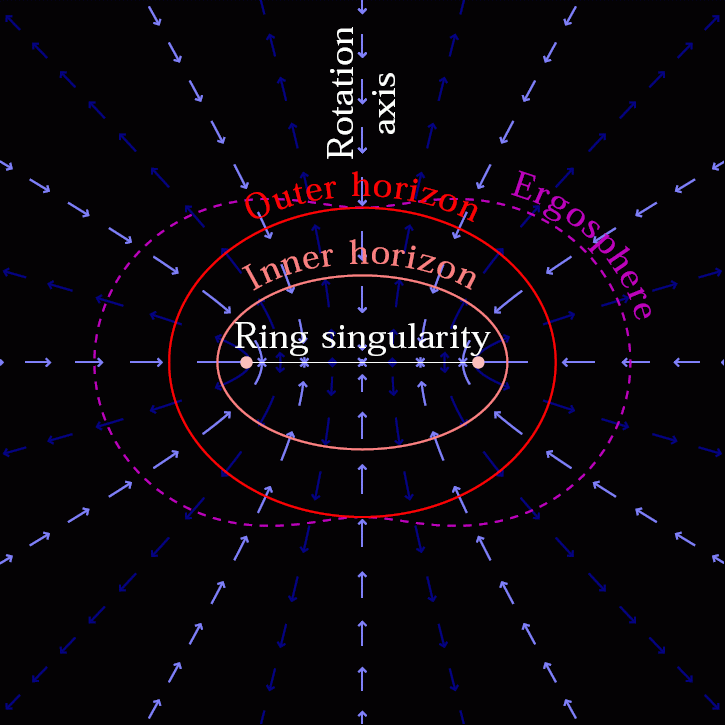
The space outside of a black hole is enormously complicated, even if we treat it as an idealized, rather than a physically realistic, system. While most of us think of space similarly to how Newton did — as an imaginary three-dimensional grid, perhaps with an additional layer of Einsteinian curvature to it — it’s perhaps more accurate to think of the space around a black hole as being like a moving walkway or a river: something that moves all on its own. You can walk or swim with, against, or perpendicular to the current, but the important fact is that space behaves as a non-static, in-motion entity all on its own.
In addition to that, we’re assuming that the laws of General Relativity are still perfectly accurate for describing the dynamics of space at a quantum level: we are assuming that the quantum effects that create Hawking radiation are important, but that any quantum effects that arise because treating space as a classical and continuous background can be ignored. Researchers who work on this call this approach a “semi-classical approximation,” and the suspicion is that something about it must break down.

But what’s the correct approach? How do we successfully perform this calculation, determining the right quantum properties for the exiting Hawking radiation and determining exactly where that incoming information winds up when the black hole has completely decayed away?
Answering those questions successfully would, in fact, provide a solution to the black hole information paradox. It’s important that everyone realize, though, that despite the title of a recent article in Quanta, “The Most Famous Paradox in Physics Nears Its End,” those questions have not been answered at all.
What has happened is interesting: a series of new papers and calculations have shown that when the black hole nears the end of its life, having shrunk significantly, you can no longer “wall off” the interior of the black hole from the outside. These effects, while negligible in our relatively young Universe, will eventually dominate the dynamics of the evaporating black hole and, consequentially, the radiation that escapes from it.

The article itself does a good job of diving into many of the details, including a fact that hasn’t been appreciated nearly enough: when radiation comes out of a black hole, it should maintain a quantum mechanically entangled link to the interior of the black hole. That in itself is of supreme importance, as it demonstrates one surefire way that the semi-classical approximation we’ve used ever since the time of Hawking breaks down.
There have also been fascinating — but difficult to put into simple terms — theoretical advances that help map the entropy of the black hole’s interior to the outgoing radiation, providing a suggestion that this might be a fruitful pathway towards understanding how the information gets encoded back into the Universe we can experience. At this point, however, we’re only calculating overall properties: like putting masses on a scale and seeing if they balance. That’s a far cry, however, from learning how the information gets out, as well as if it can actually be physically gathered and measured once again.
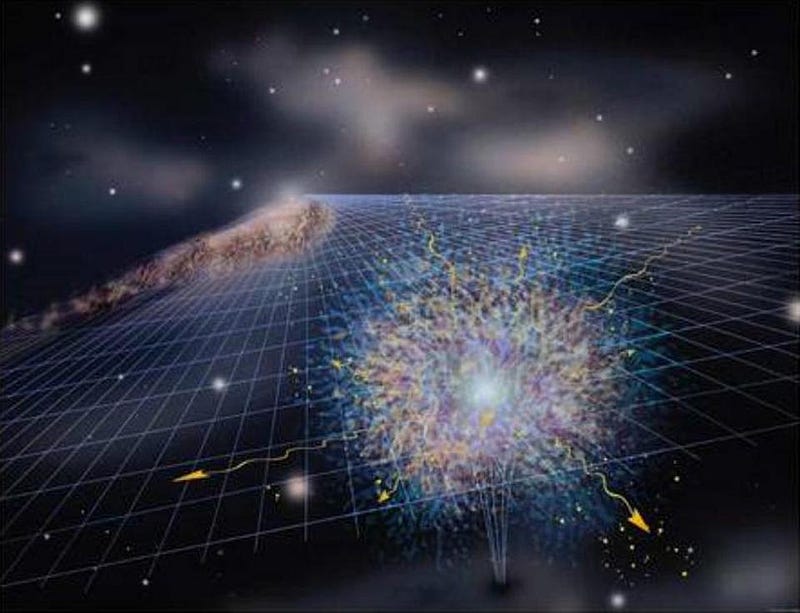
The good news is that we’ve made progress on the core issue of the black hole information paradox: we can state with a fair amount of certainty that (at least) one of the assumptions we put into the problem is incorrect. We cannot simply look at the space outside of a black hole when we calculate the outgoing radiation; there’s a continuous interplay between that radiation and the interior of the black hole itself. As the black hole evaporates, the interior begins to contain information that’s linked to the outgoing radiation, and can no longer be ignored.
But we’re still a long way away from determining exactly where that information goes, and how it gets out of a black hole. Theorists disagree over the validity and soundness of many of the methods that are currently being employed to do these calculations, and no one has even a theoretical prediction for how this information should be encoded by an evaporating black hole, much less how to measure it. The black hole information paradox will no doubt be making headlines numerous times over the coming years as developments continue, but a sufficient solution to the big question — of where does the information go — is arguably as far away as ever.
Starts With A Bang is written by Ethan Siegel, Ph.D., author of Beyond The Galaxy, and Treknology: The Science of Star Trek from Tricorders to Warp Drive.





